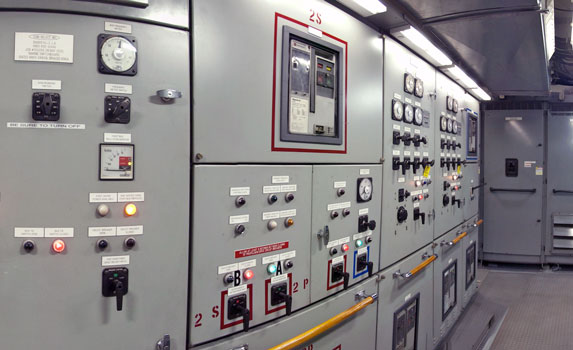Regular testing of electrical equipment in the field is a critical step for ensuring safe and efficient operation throughout its service life. Adhering to these four fundamental guidelines can significantly enhance the maintenance process, thereby maximizing equipment longevity and functionality.
1. Keep it dry
Water and electricity form a dangerous combination. When moisture infiltrates electrical assemblies, it can lead to extensive equipment damages or even fatalities.
Moisture ingress can result in short circuits, causing frequent tripping of protective devices. Another danger is corrosion, which can degrade mechanisms and components. For instance, the mechanical assemblies and linkages inside a circuit breaker could corrode and contaminate lubricants, affecting their ability to move or operate smoothly.
Condensation is a natural process that can cause severe damage to electrical equipment. When condensation occurs in an electrical enclosure, it can cause rusting, dielectric breakdown, and short circuits. Adequate airflow prevents the buildup of excess moisture.
High humidity can also create moisture paths between unintended connections, affecting insulation resistance by drastically lowering testing results. Space heaters can be installed to reduce moisture and maintain temperature inside the enclosure.
2. Keep it clean
Electrical equipment should be kept clean for maximum efficiency and service longevity. Photo Credit: Andrew Barna, flickr (CC).Dust, dirt, and other contaminants can accumulate on neglected electrical equipment and impair its performance. Regular cleaning of electrical components and surfaces helps to prevent issues such as overheating, arcing, and insulation breakdown.
Various cleaning methods are available for electrical equipment, with the most suitable choice depending on factors such as the type of apparatus to be inspected, and the operating environment. Regardless of the method chosen, it’s important to follow manufacturer guidelines, industry standards, and safe work practices to avoid damage to the apparatus upon reenergization or to maintenance personnel.
Related: Cleaning Methods for Electrical Preventive Maintenance
3. Keep it cool
Overheating is a common cause of equipment failure. Adequate cooling mechanisms, such as proper ventilation and heat dissipation, should be in place to maintain optimal operating temperatures.
Installing industrial exhaust fans and air circulators can help ensure adequate ventilation. Regular monitoring of temperature levels and timely maintenance or replacement of cooling systems are essential to maintain a consistent environment.
4. Keep it tight
The term “grade” refers to the markings or symbols found on fasteners. Photo: NETA MTS-2023Loose connections can lead to voltage drops, arcing, and equipment damage. Periodic inspection and tightening of electrical connections, including terminals, conductors, and busbars, help ensure proper electrical continuity and minimize resistance.
Because most electrical components tend to get hot before they fail, infrared inspection is the preferred diagnostic technology used to detect early failures in electrical systems. Performing periodic scans prior to a maintenance shutdown can improve efficiency by pinpointing the areas of highest concern.
Following manufacturer’s recommended torque values for bolted electrical connections is essential to ensure safety, reliability, performance, and compliance with industry standards. Overtorquing can cause damage to the bolt, nut, or the electrical components being connected.
Related: Fastener Torque in Electrical Systems Explained
Summary
Safeguarding electrical equipment against potential hazards such as moisture ingress, condensation, and contaminants is paramount to ensuring its reliable performance and longevity. Regular visual inspections, cleaning, and adherence to manufacturer guidelines are essential practices.
The adoption of advanced diagnostic technologies like infrared inspection can offer valuable insights into detecting early failures, thereby enhancing the efficiency of maintenance efforts.
By following these Four Rules for Effective Electrical Equipment Maintenance, you can help extend the lifespan of your equipment, prevent an unplanned outage, and maintain a safe working environment.


